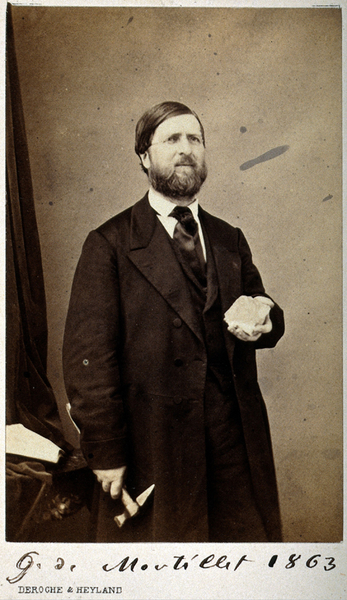
- Home
- Portrait gallery
- Gabriel de Mortillet (1821-1898)
Gabriel de Mortillet was a curator at the musée gallo-romain (1868-1885).
© Photograph by Deroghe & Wellcome
A staunch Republican and a major figure in intellectual circles, Gabriel de Mortillet was also one of the founding fathers of prehistory.
A committed French archaeologist and anthropologist
A geological engineer trained at Paris’s Conservatoire des arts et métiers, his political opposition led him into exile in Savoie, Switzerland and Italy. It was in 1849, while exiled in Switzerland, that Gabriel de Mortillet began investigating prehistory. In 1864, he founded the review Matériaux pour l'histoire positive et philosophique de l'Homme, which he passed on to Émile Cartailhac in 1869. He then participated in the creation of the Congrès internationaux d'anthropologie et d'archéologie préhistorique, before organising the prehistoric section of the History of Work gallery at the universal exhibition in 1867 and publishing his Classification industrielle, in which he proposed a chronology based on the study of the evolution of tools.
At the service of the musée gallo-romain
Responsible for cataloguing the geological collections at the muséum de Genève and then head of the musée d'Annecy, in late 1867, following the death of Philibert Beaune, Gabriel de Mortillet became a curator at the musée gallo-romain. He classified the prehistoric collections, in particular Boucher de Perthes’ flint, and played an active role in the museography of room 1 of the museum. In 1869, he wrote Promenades au musée de Saint-Germain, the first guide to the museum, in which he described in detail the collections and how they were presented.
To find out more, see Noël Coye’s biography.




